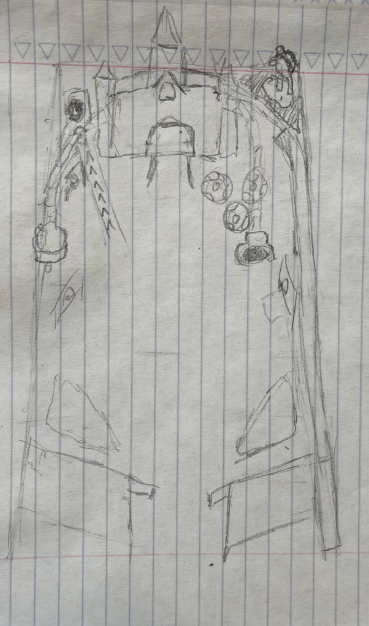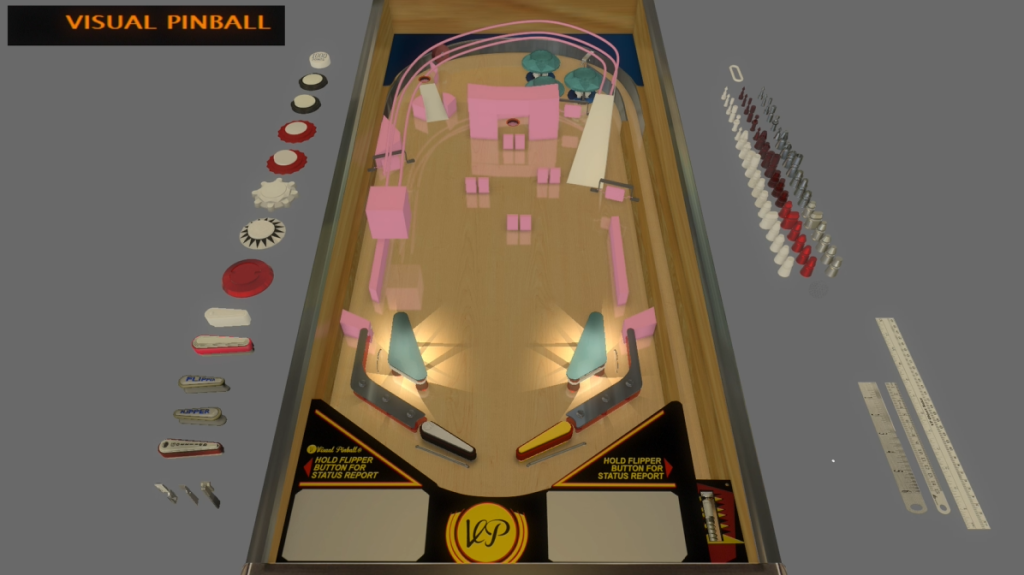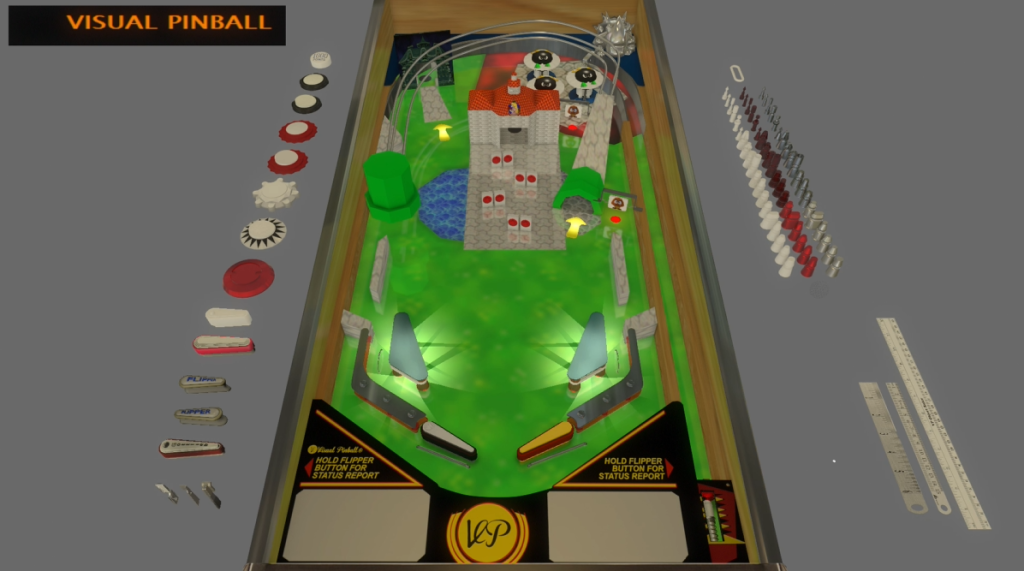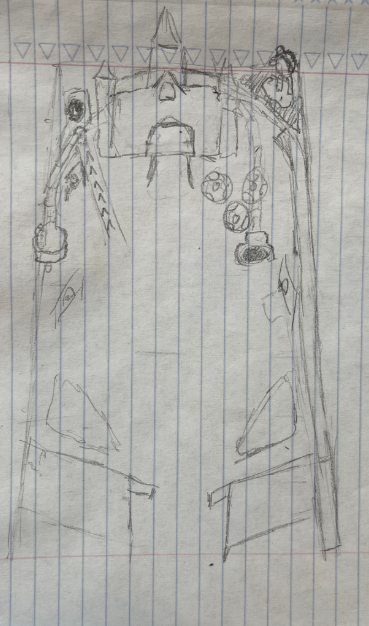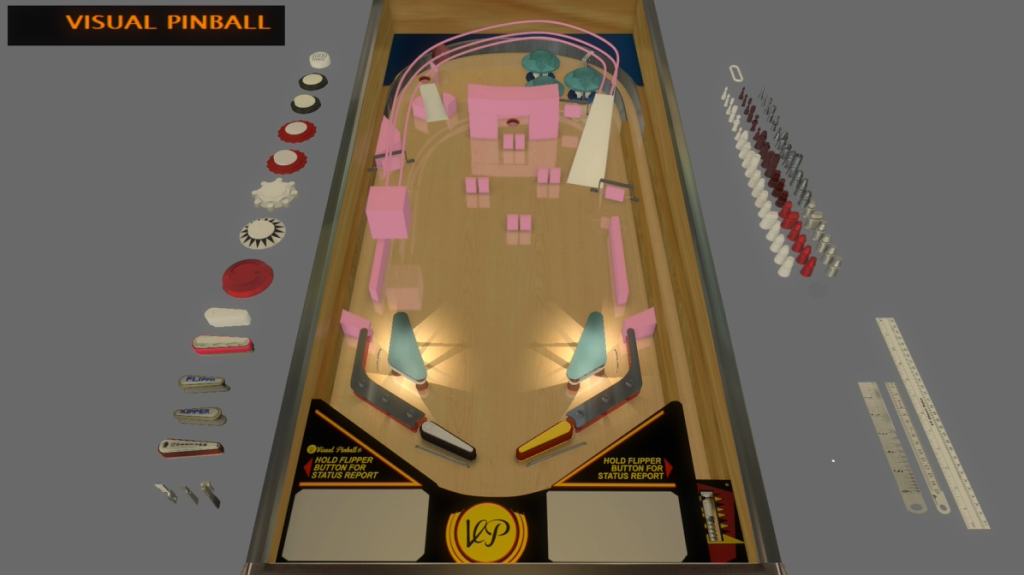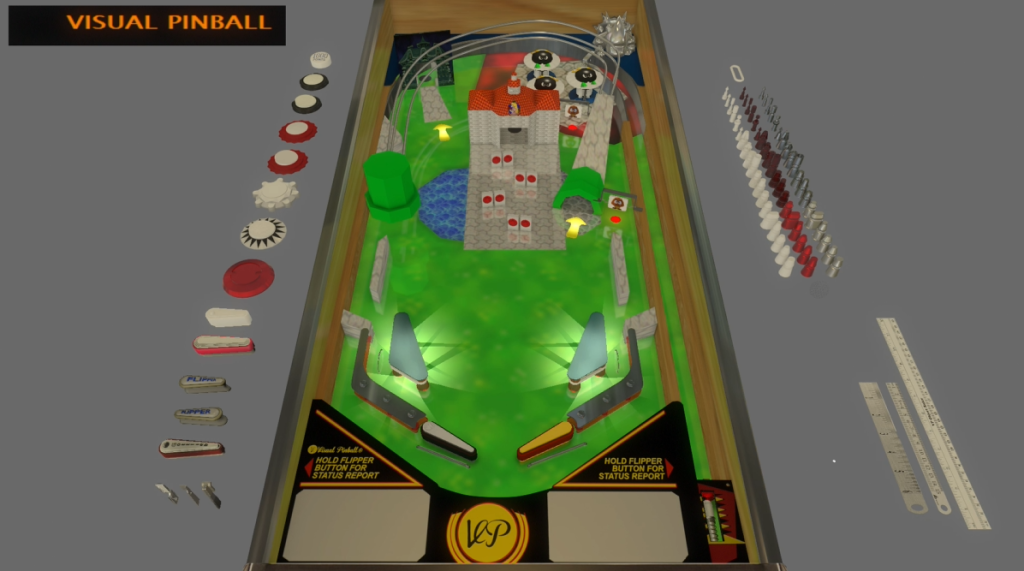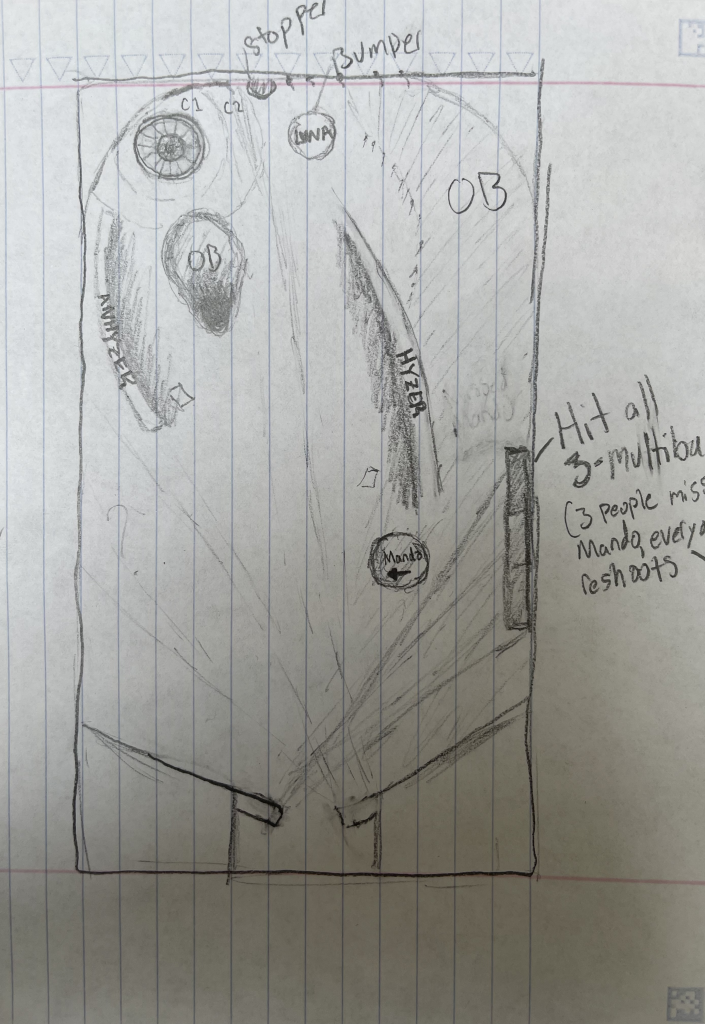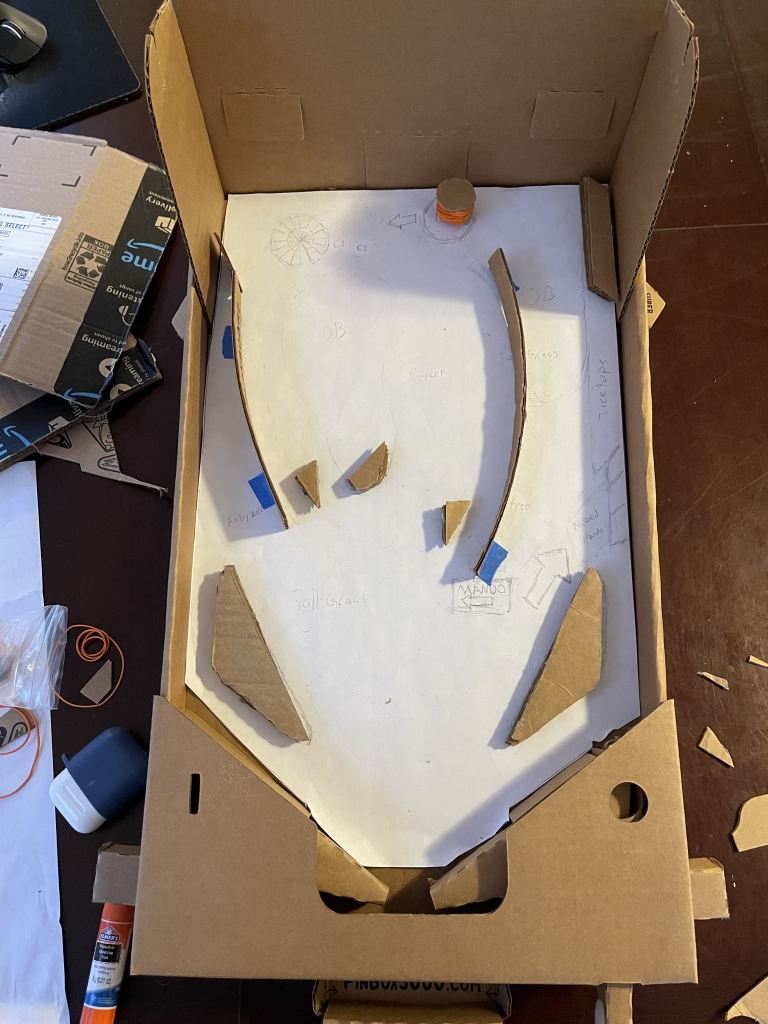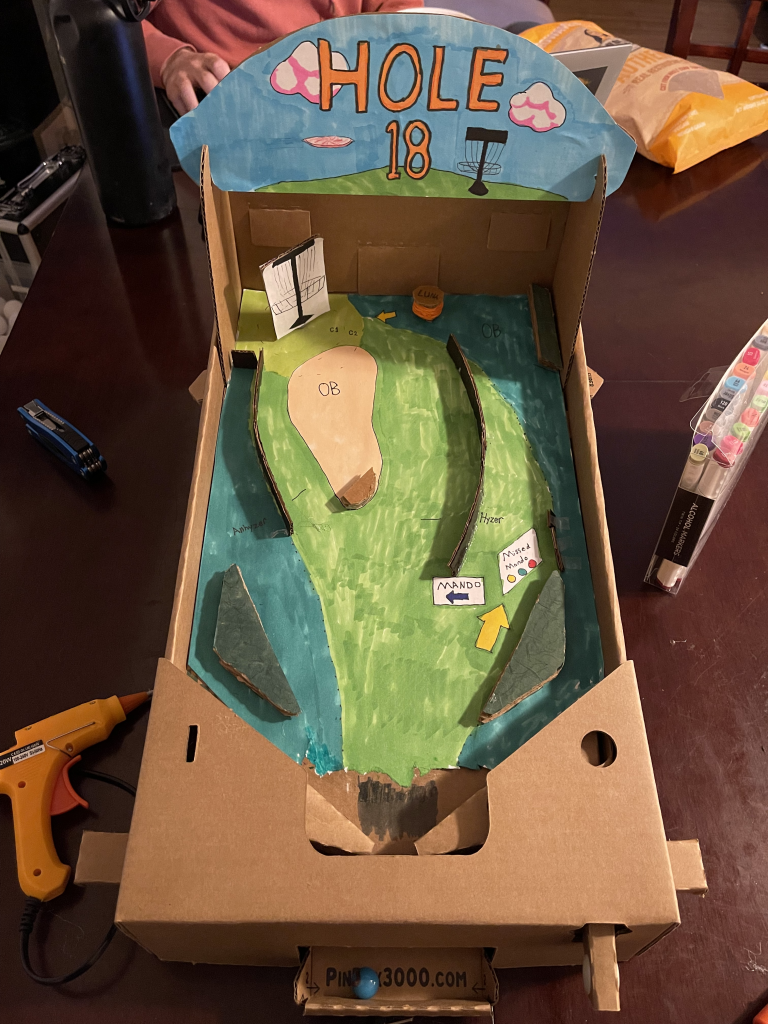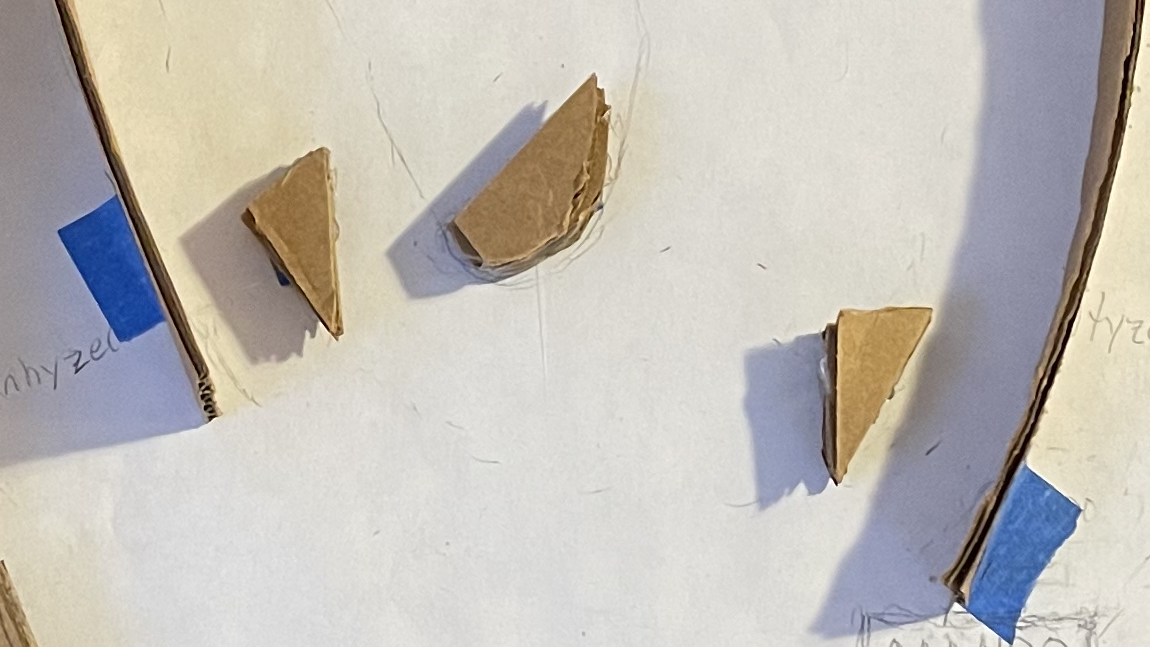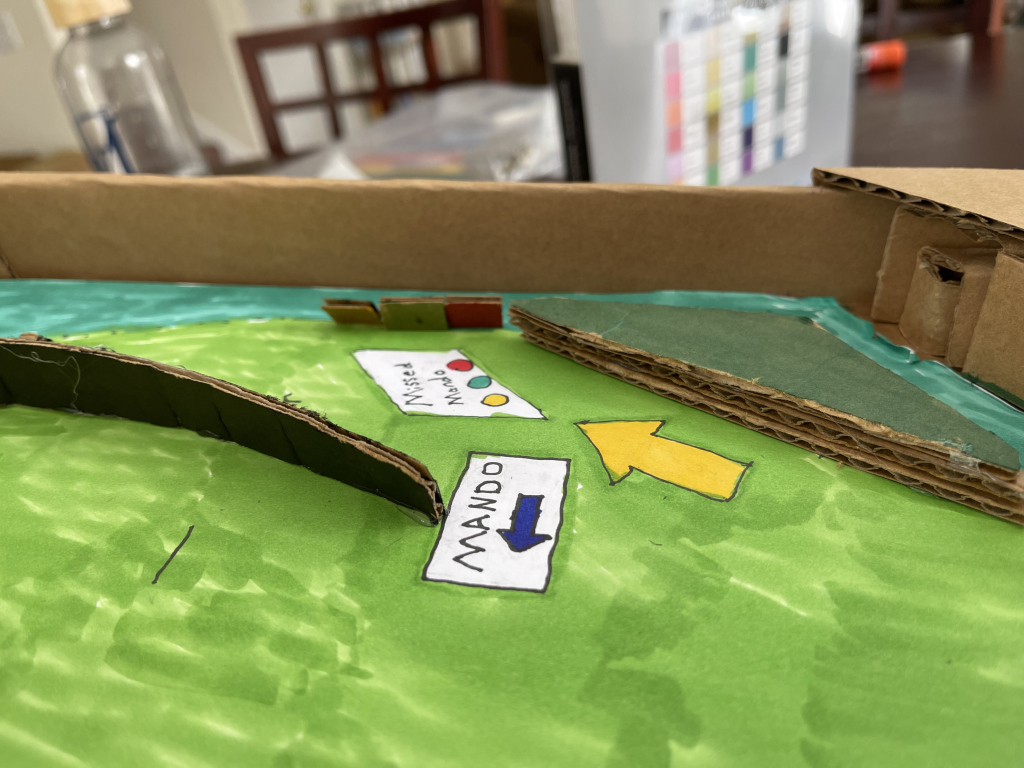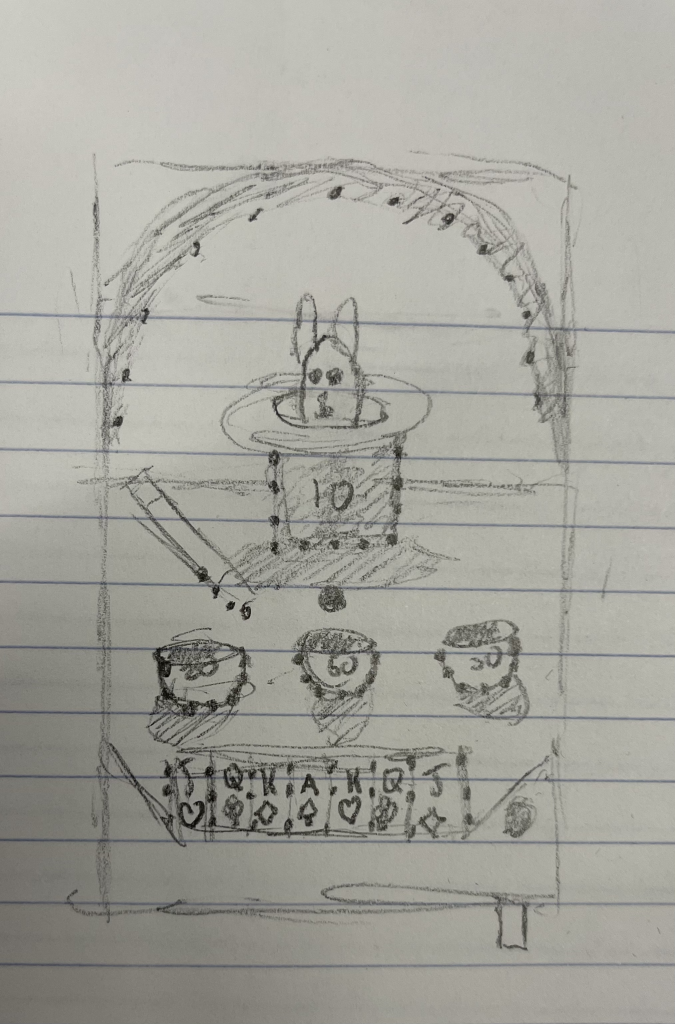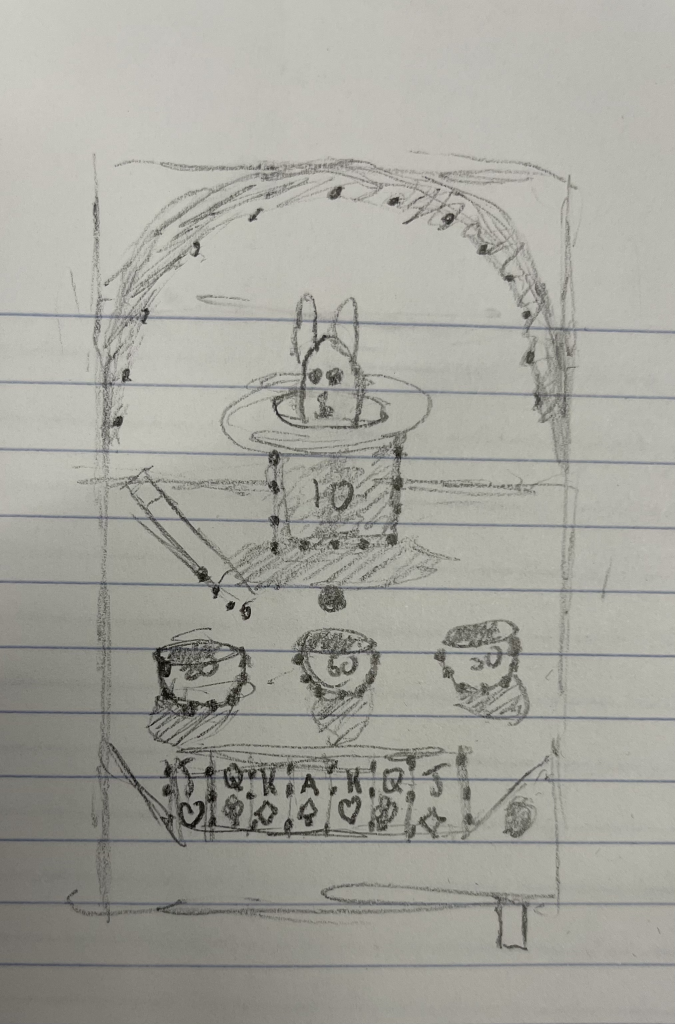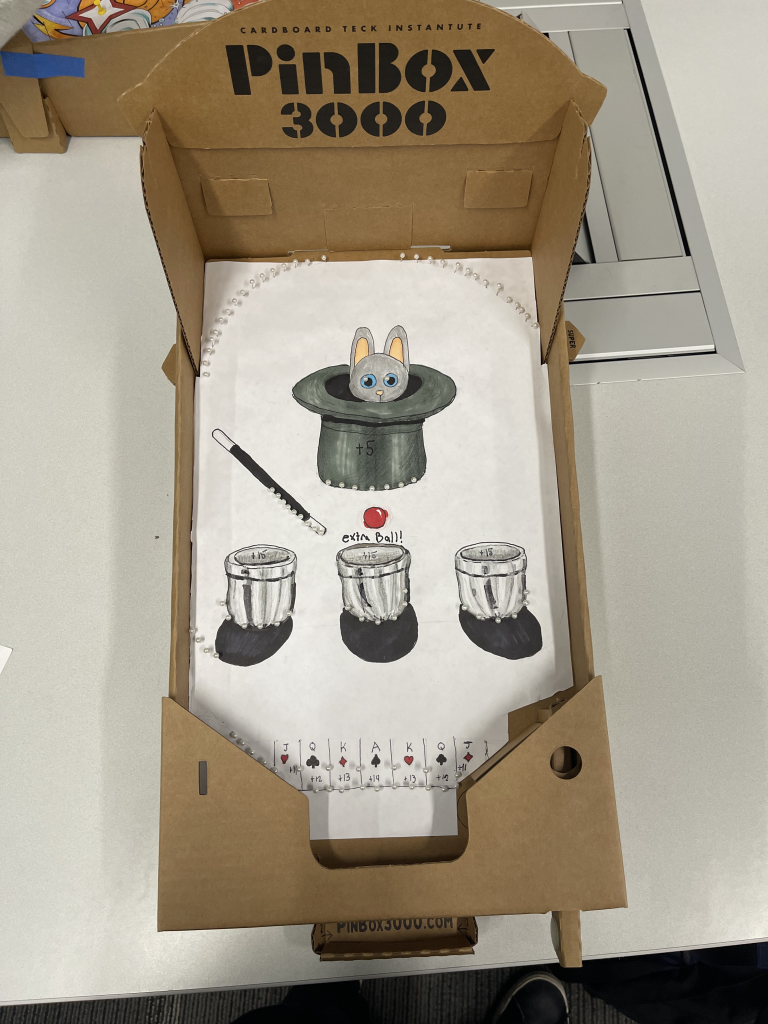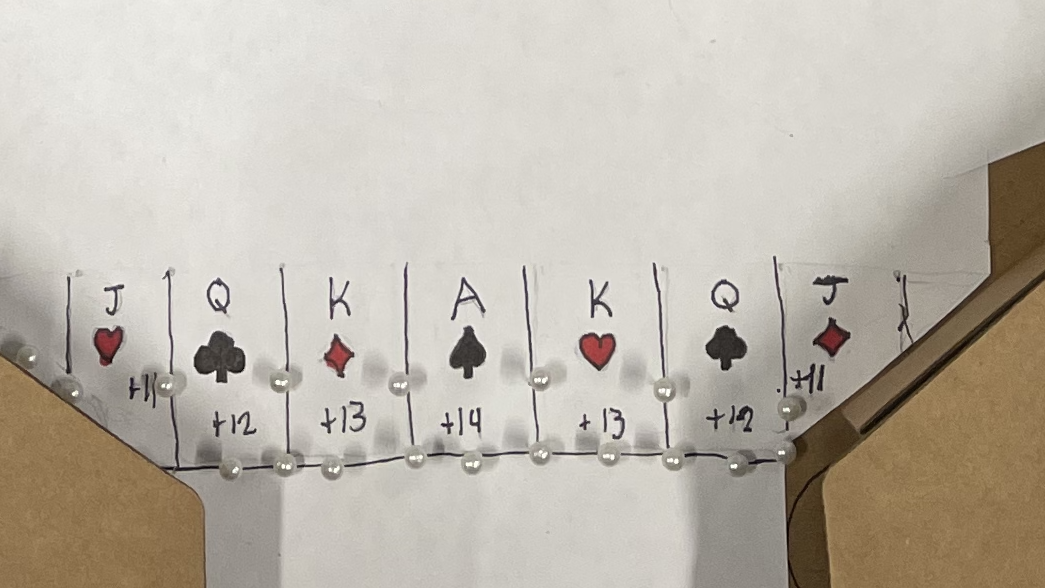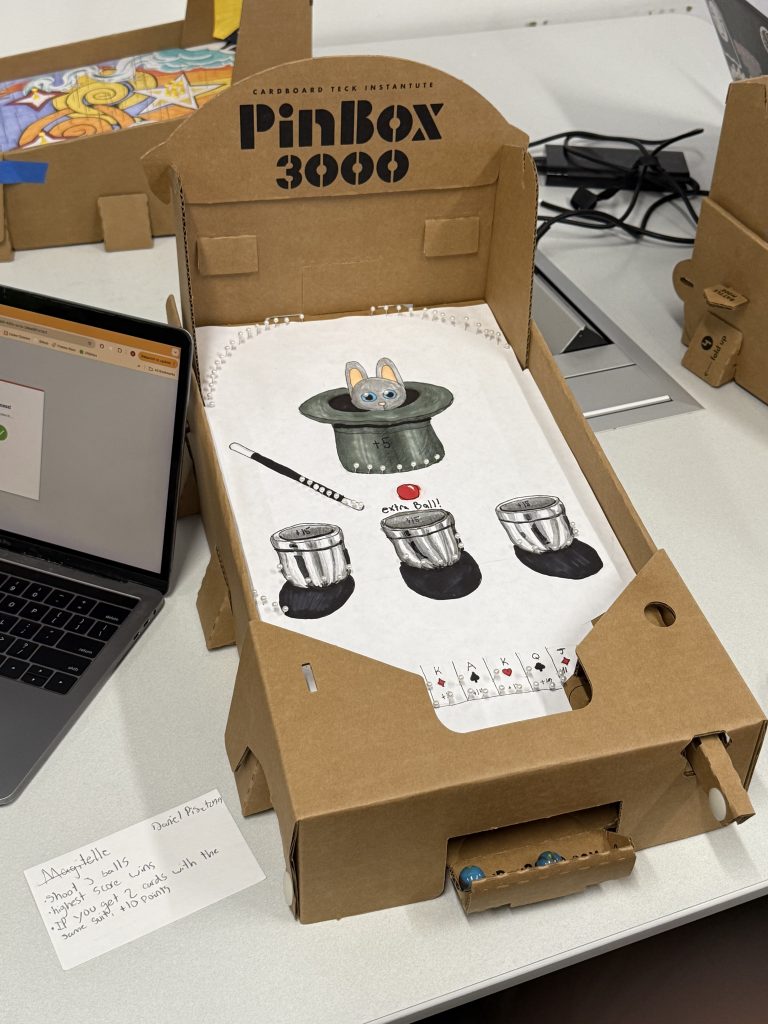Hole18 Disc Golf Pinball and Mario Pinball
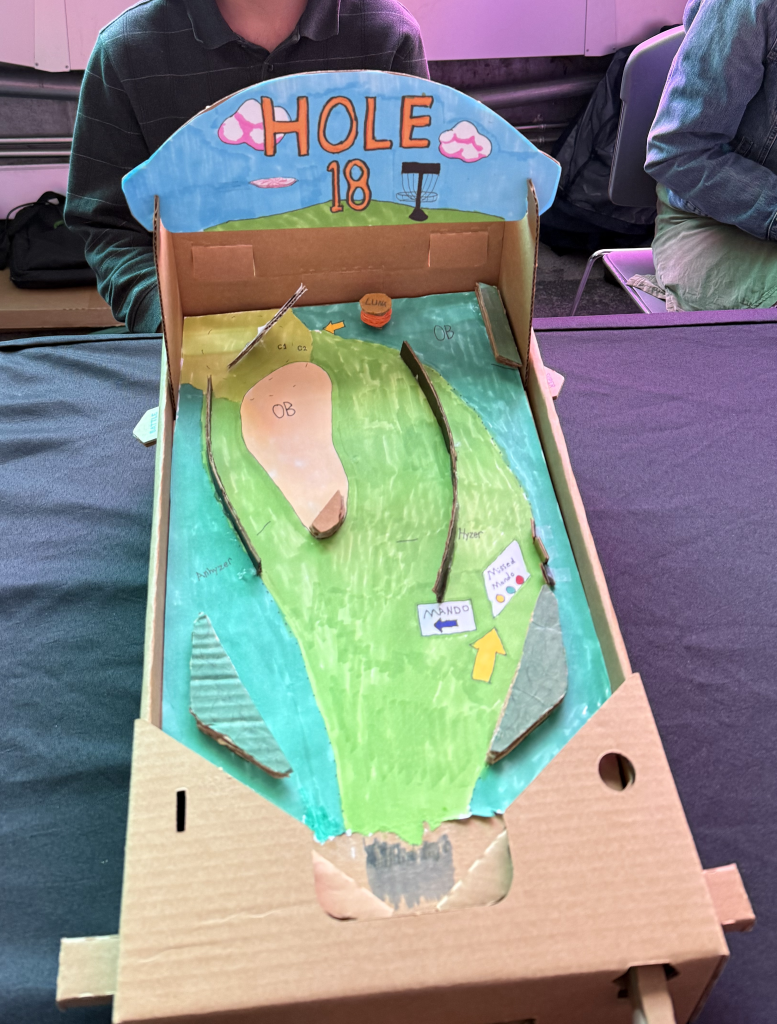
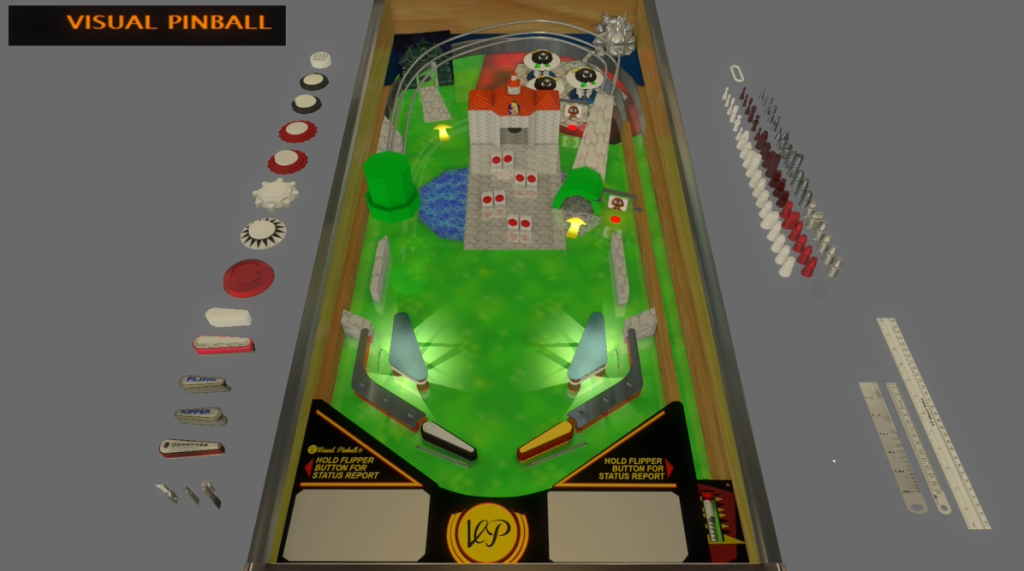
Imagine
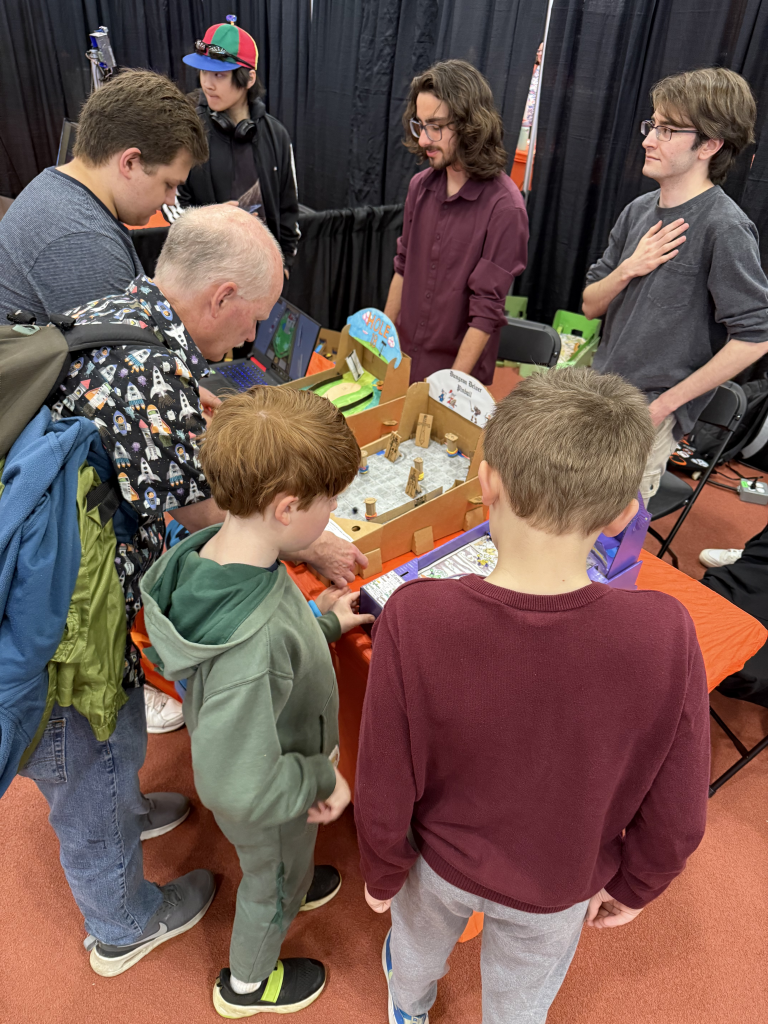
I learned a few valuable things from my experience at Imagine. The main thing was that you shouldn’t wait until the last minute to try to install visual pinball on your laptop. I also learned a lot about my pinball machines. One issue with my Hole 18 Pinball was that I had a wall to block players from hitting the target by going up the very left side, but the ball could get stuck on this wall, which I didn’t realize. I had to compromise a little of the “skill” required for my game to fix this issue.
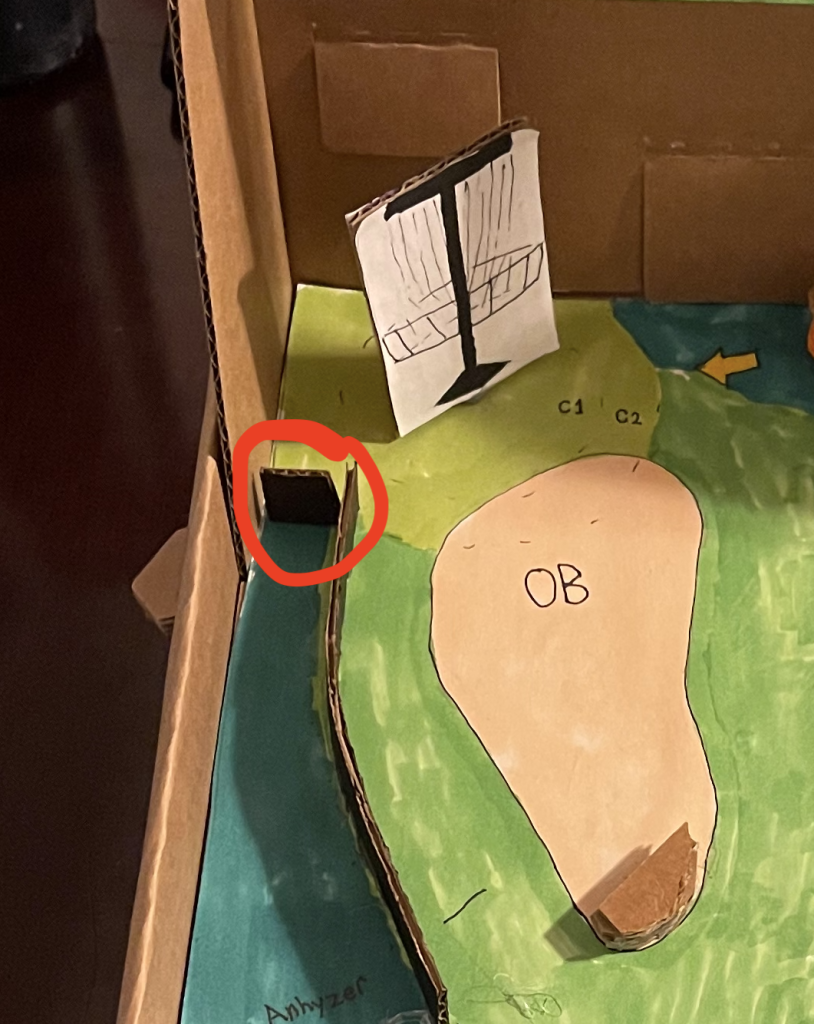
I also realized a few things about my Visual pinball machine, MarioPinball. The main one was that when players would get the ball in Luigi’s Mansion, they wouldn’t realize that they got an extra ball that they had to launch. Sometimes this would happen to me when playing a real pinball machine, I’d think the ball got stuck somewhere and then after a few seconds, check the launcher and see a ball there. I believe that because it was a student project, people were more likely to assume that it was an error that caused the ball not to come down. It’s also possible that this happened because a lot of the playtesters were children and they just didn’t have enough experience with pinball to check for that kind of thing. Those were the main takeaways I got from Imagine.
Strong
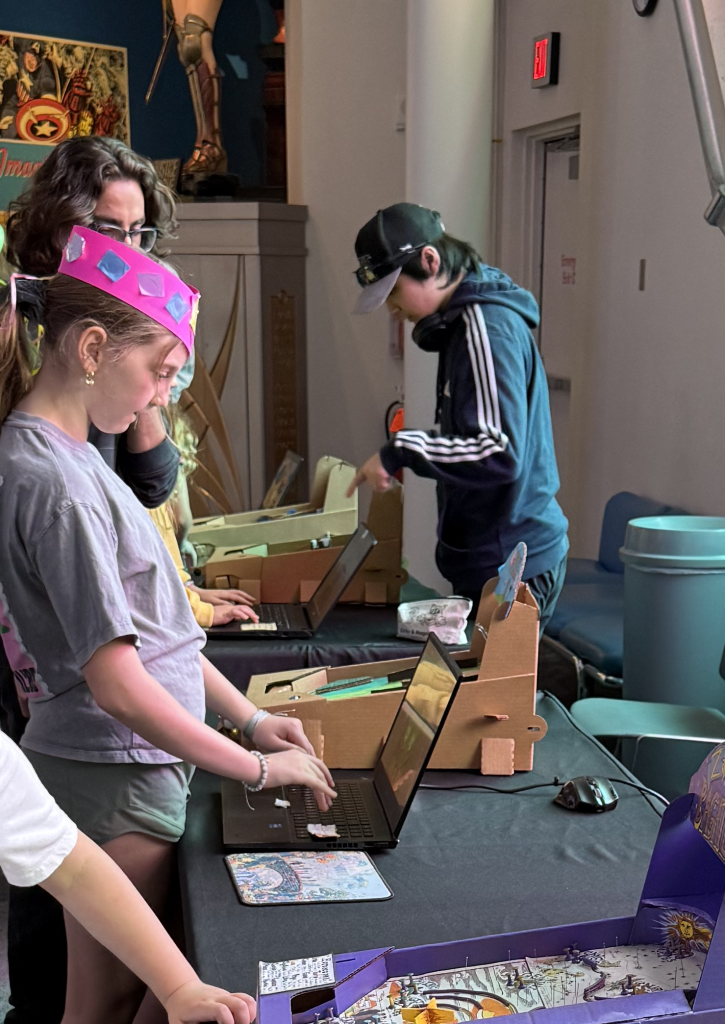
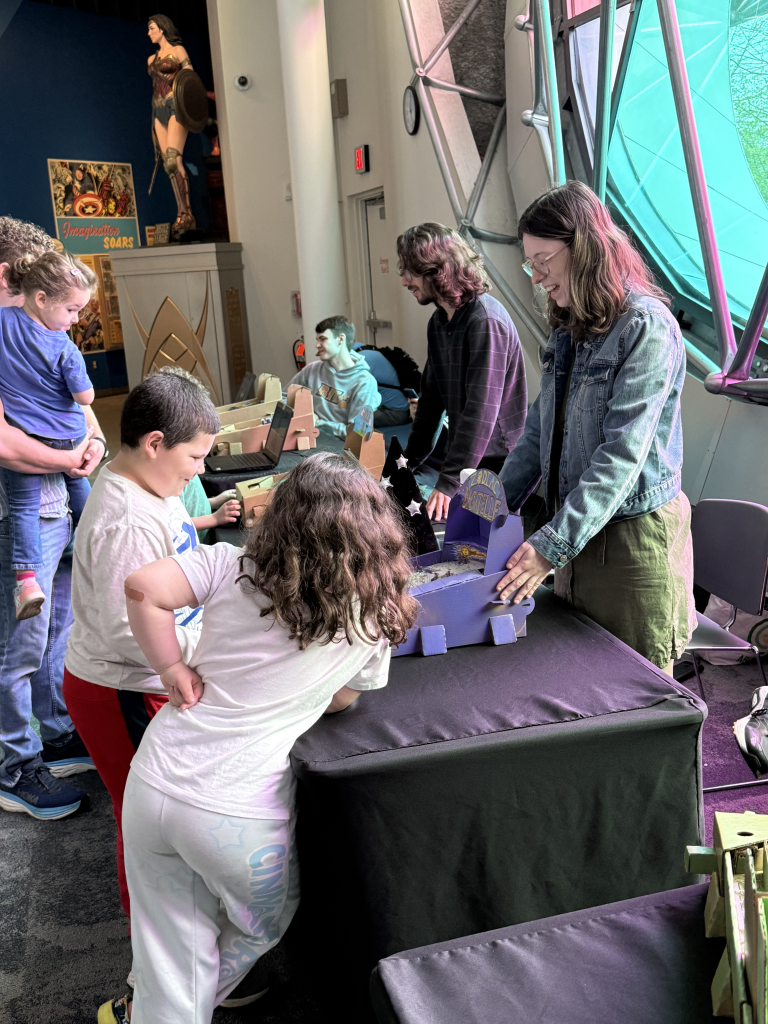
I learned a great deal from people playing my games at the Strong Museum. The first main piece of feedback I got was on the Hole18 Pinbox machine. I have two main lines, Hyzer and Anhyzer that players could try to use to hit the basket, but multiple people showed that when the ball went back down the Anhyzer line, it would shoot right into the middle and instantly lose the game. Because of this, I tried to bend the Anhyzer line so it pointed closer to the edge so it wouldn’t drop the ball down the middle.
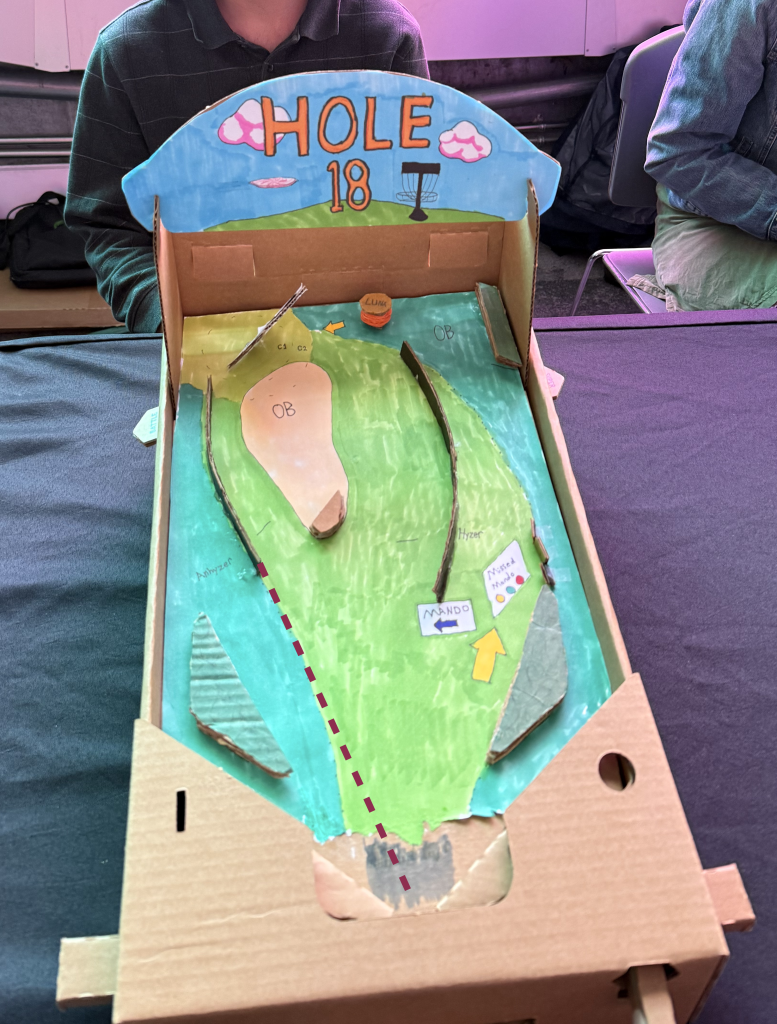
One piece of positive feedback I got about Hole18 Pinball is that it is very beginner/child-friendly. There are 2 simple shots to go for and there isn’t a lot going on. I was happy to hear this because the goal was to have the 2 main shots be the focus and the fact that the other aspects of the box didn’t distract from this was a huge positive. Originally, I had a lot going on with scoring, but when I simplified the scoring to just, +1 for hitting the basket, the box came together. The scoring needed to match the simplicity of the box for a more unified product.
I received a lot of feedback about Mario Pinball. One small bit of feedback from one of my classmates that meant a lot was that the red coins in the center of the machine were perfect for the theming. I have to give some credit to Kai because he recommended putting something in the middle of the machine; it was looking empty before I added the coins. It was great to hear this kind of positive feedback.
The biggest issue with Mario Pinball was that the game didn’t give enough information to the players. All the layouts and shots were clear, but I didn’t get to scoring, so it wasn’t clear that the players were making real progress. I also didn’t have any instructions about a win condition. The lack of a back glass on my machine really hurt it. I had to narrate what players should be going for as they used my machine, which was fine, but the game should speak for itself. The last small issue with Mario Pinballl was that when players would win by completing all the challenges and then getting the ball into the castle, the ball would shoot back to the players like nothing happened. I did have lights on a Bowser statue in the corner to try to convey that he had “fallen into lava” but because the ball was released after 1 second, players didn’t have time to focus on that. They expected “winning” to mean they didn’t have more to do, which is a fair assumption, so they were surprised when they got the ball back. I made a small change that the ball would just be kept if they won, which is what it should have been from the start. Other than that, most of the feedback was very positive!
Takeaways
I am so happy I got to take this class. I learned a lot about the history, design process, and industry of pinball. The biggest takeaway that I got was that taking this class felt like being a kid again. We did “crafts” working on the Pinboxes, and we went on a field trip to the Strong Museum. This class had a feeling of fun to it, which is not common for a college course. It was a great experience and the things I can take away from this course, both my knowledge and the pinball machines I built, are so cool and make me incredibly proud. For this course, I give a 10/10, would recommend.

